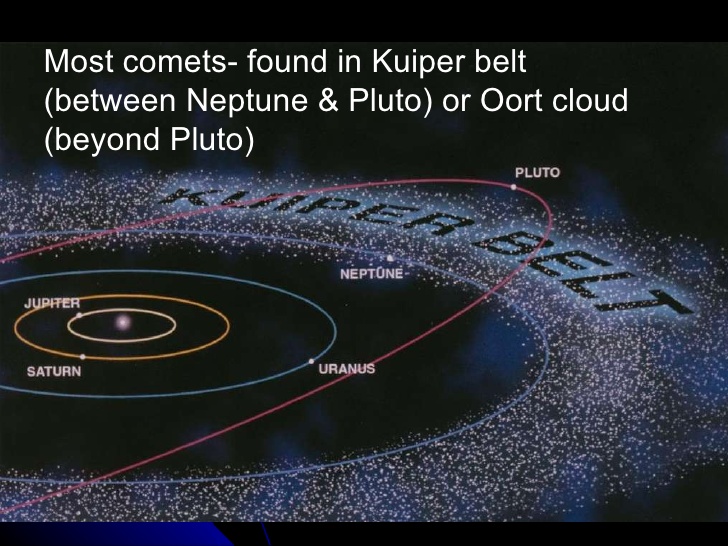Short period comets take less than 200 years to orbit the sun and originate in the kuiper belt

Short-Period Comets: Originating in the Kuiper Belt and Orbiting the Sun within 200 Years

Short-period comets, intriguing celestial objects that captivate the curiosity of astronomers and space enthusiasts alike, have a unique characteristic that sets them apart from their long-period counterparts. These comets take less than 200 years to complete an orbit around the Sun. Originating from a distant region of our Solar System known as the Kuiper Belt, they offer valuable insights into the origins of our cosmic neighborhood.
The Kuiper Belt: A Storehouse of Icy Objects
The Kuiper Belt, proposed by astronomer Gerard Kuiper in the mid-20th century, is a disc-shaped region extending beyond Neptune’s orbit, populated by countless small celestial bodies, including short-period comets. It is believed to be the relic of the early stages of our Solar System’s formation, containing remnants of primordial materials and offering invaluable information about the early days of our cosmic neighborhood.
Captivated by the Sun’s Gravitational Pull

Short-period comets, also known as periodic comets, are composed of a mixture of volatile compounds, such as water, carbon dioxide, ammonia, and methane, along with dust particles. These comets have unique orbits that are strongly influenced by the gravitational pull of the Sun.
When a short-period comet ventures too close to the Sun, the intense solar radiation heats up the comet’s icy nucleus, causing it to vaporize and release gas and dust. This creates the magnificent glowing tail that characterizes comets, as they journey through their elliptical orbits. The released dust and gas form beautiful glowing trails that captivate skywatchers on Earth.
The Dance of a Short Orbits
Unlike their long-period counterparts, whose elliptical paths can extend to thousands or even millions of years, short-period comets have orbits that are measured in decades or centuries. These comets often have orbits that lie predominantly within our Solar System, rarely venturing too far beyond the orbit of Neptune.
The gravitational influence of the giant gas planets, particularly Jupiter, plays a critical role in shaping the trajectories of these comets. Due to Jupiter’s significant gravitational pull, it acts as a cosmic “shepherd,” either capturing short-period comets into tighter orbits or ejecting them completely from the Solar System. This interaction helps prevent short-period comets from accumulating over time.
Observing Short-Period Comets
To improve our understanding of these fascinating celestial objects, astronomers observe and study short-period comets using various tools and techniques. Ground-based telescopes, space telescopes, and space probes have all contributed to unraveling the mysteries surrounding their origin, composition, and behavior.
By gathering data about their chemical composition, structure, and behavior during close approaches to the Sun, scientists hope to gain insights into the fundamental processes that govern the formation and evolution of our Solar System.
Conclusion
Short-period comets originating in the Kuiper Belt and completing an orbit around the Sun within 200 years provide a mesmerizing glimpse into the history and dynamics of our Solar System. As we continue to explore and study these fascinating objects, the mysteries of our cosmic neighborhood gradually unfold, offering a deeper understanding of our place in the vastness of space.
Source: NASA - Kuiper Belt Overview
Tags
Share
Related Posts
Quick Links
Legal Stuff

